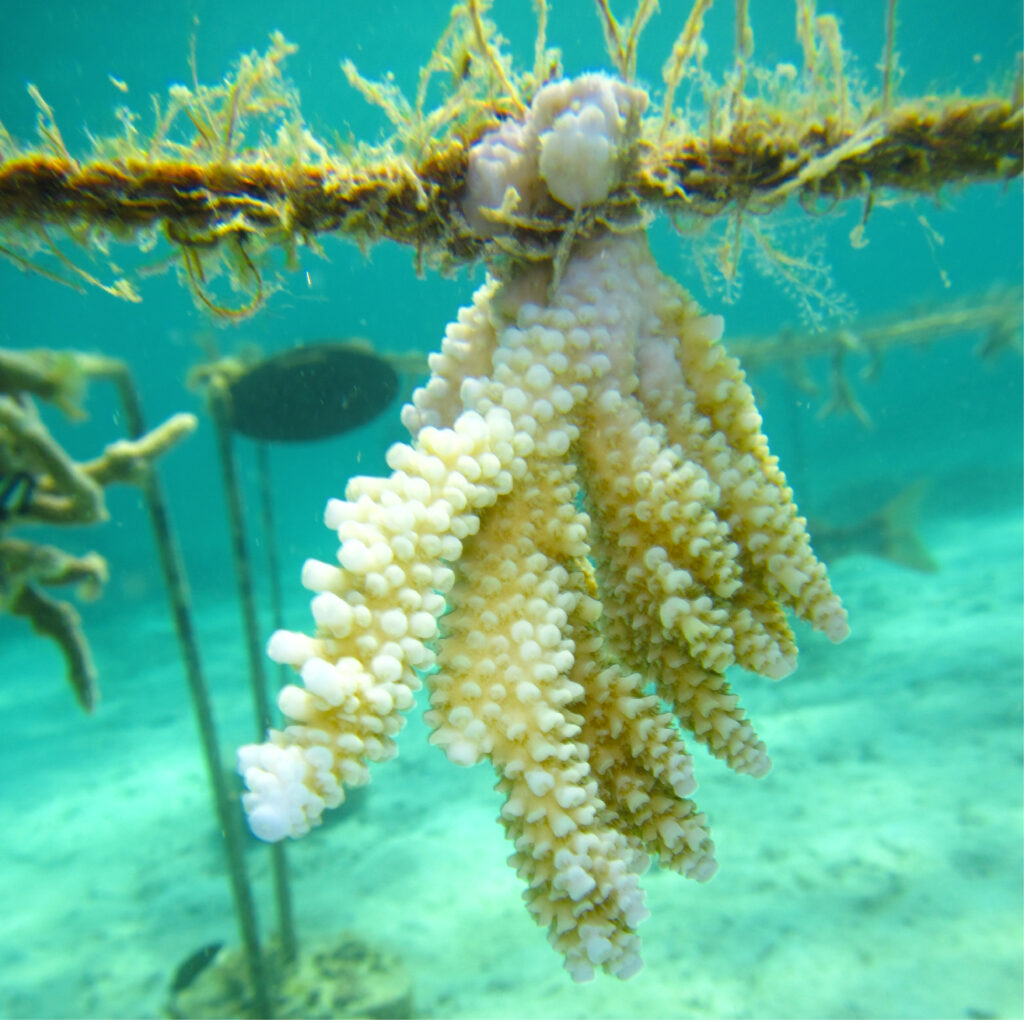Andamans Coral Restoration
My second coral reef project invovled launching a campaign, where one could gift’ a coral reef.
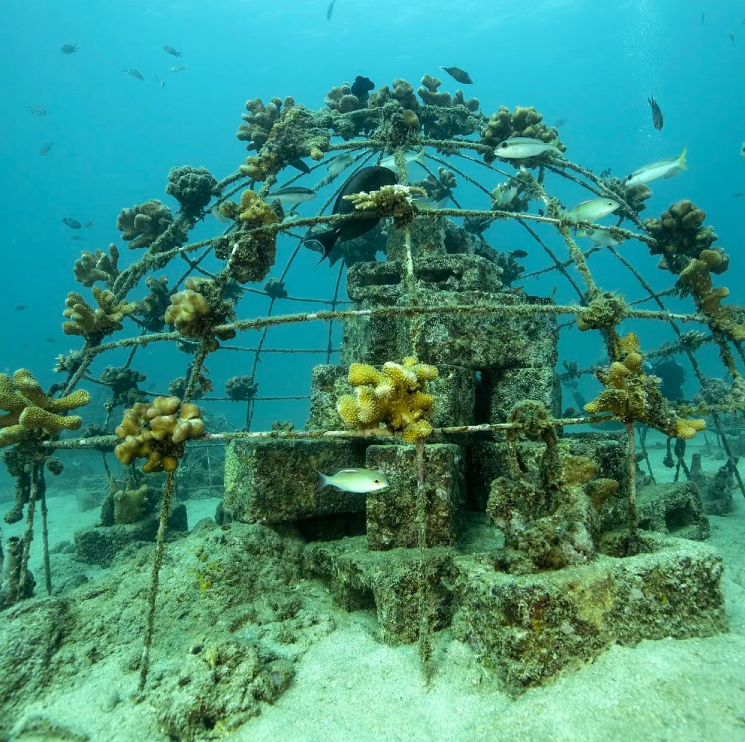
Andamans
Raksha Bandhan is a Hindu festival that celebrates the love of a brother for his sister. On this day, sisters tie a ‘rakhi’ on the wrists of their brothers to protect them against evil influences and pray for their long life and happiness. We also exchange gifts. So before Raksha Bandhan 2021, I launched a campaign where one could “gift” a coral reef by becoming a ‘reef guardian’, sponsoring the upkeep of a reef. I did this in collaboration with Reef Watch, a marine conservation organisation that works as a custodian of coral reefs in the Andaman Islands. I was able to raise enough funds for one reef structure which will be cared for by Reef Watch for a year!

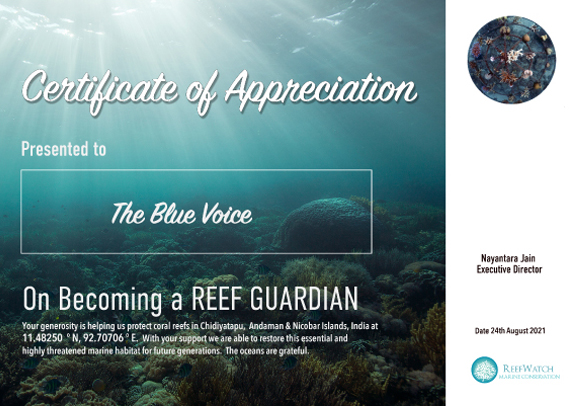
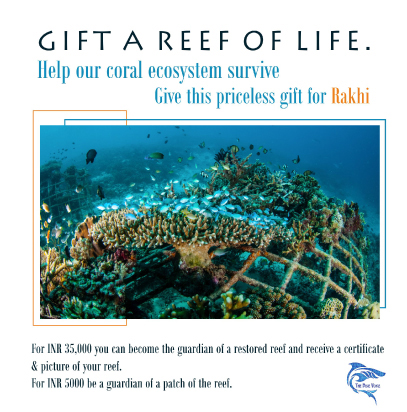

Andamans coral reef updates
- August 2022
- June 2022
- March 2022
- January 2022
- November 2021
Maldives Coral Restoration
Coral reefs protect our shorelines from being vulnerable to erosion and rising sea levels. A loss of coral reefs would push over 200 million coastal communities out of their homes.
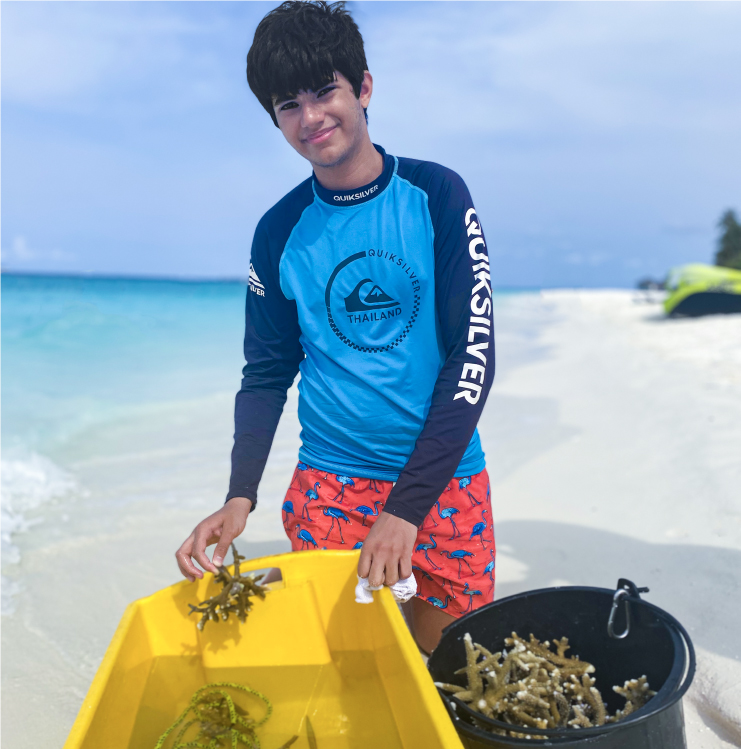
April 2021
Coral Restoration, Baa Atoll, Maldives


October 2021
6 Month Update
The corals on the adopted rope in the nursery have been showing very promising signs of survival and growth. The majority of them have now grown over the rope itself, giving them greater stability and vastly increasing their chances of survival. Some of them are already getting pretty large!
A small number of fragments on the rope have died since being adopted into the nursery. Fragmentation and growth of new colonies is a natural part of coral evolutionary ecology, and it is usually a process with a high death rate. Coral nurseries aim to maximise the chances of the fragments surviving this vulnerable stage, but even so, a few fragments dying is to be expected and the number of fatalities on my adopted rope is well within the acceptable amount.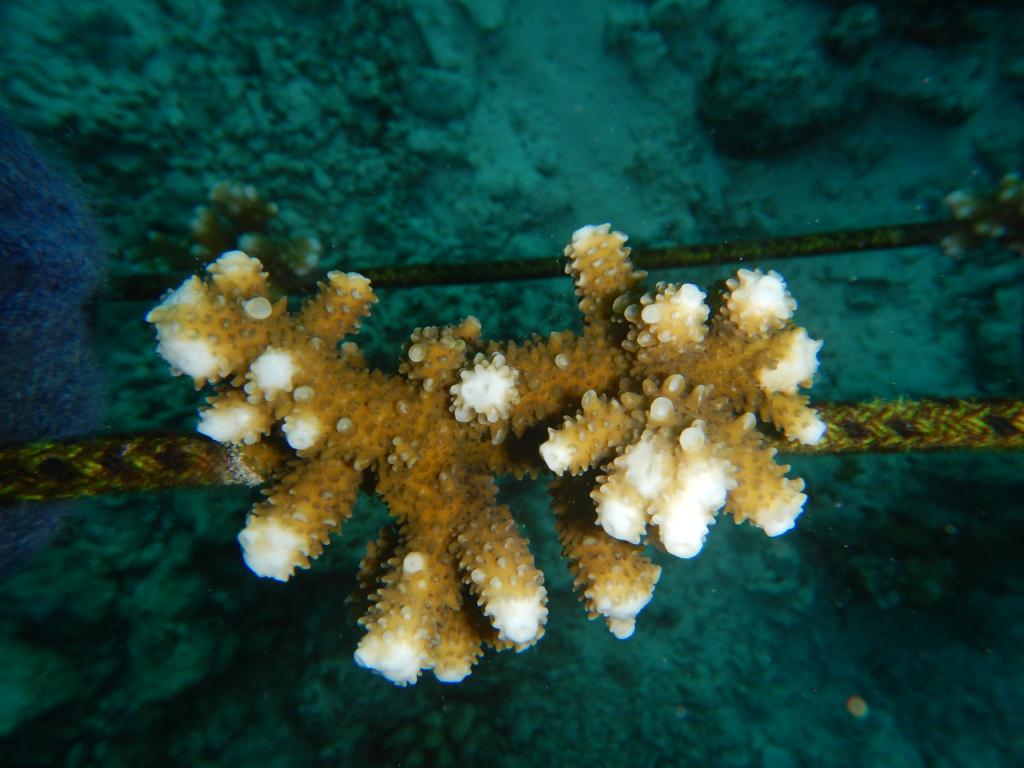
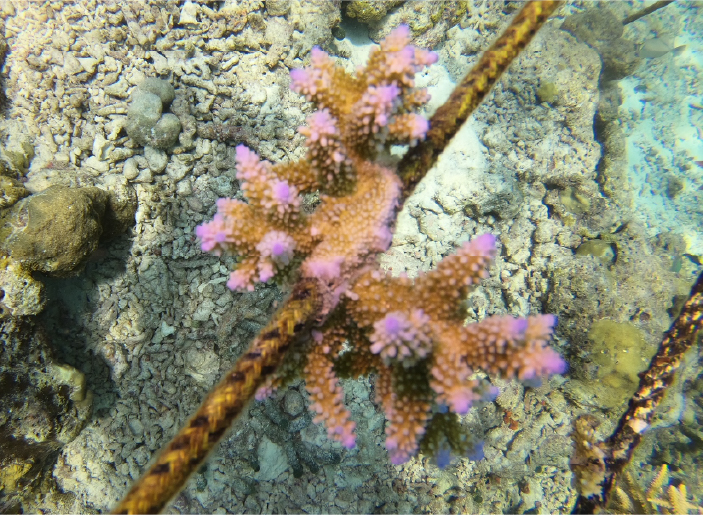
January 2022
9 Month Update
The corals on my adopted rope are continuing to thrive and are reaching a really impressive size! The majority of the colonies are still healthy and should be ready to transplant onto the reef in a few months’ time!

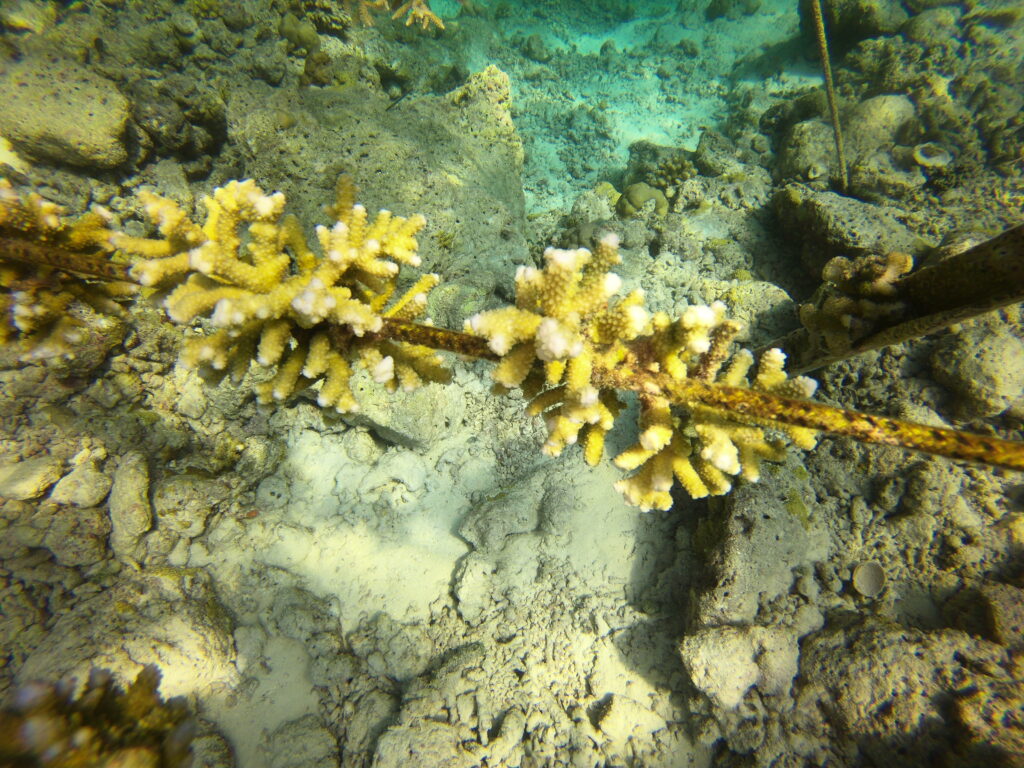
September 2022
17 Month Update
My adopted coral colonies have became mature enough and have now been transplanted onto the house reef close to the nursery at approximately depth 5-7m.
In order to transplant them I divided the rope into 3 smaller sections and attached each of these to areas of bare rock on the reef. Unfortunately, a few more of the colonies on my rope died in the last few months but several colonies have survived and continue to flourish since the transplantation.
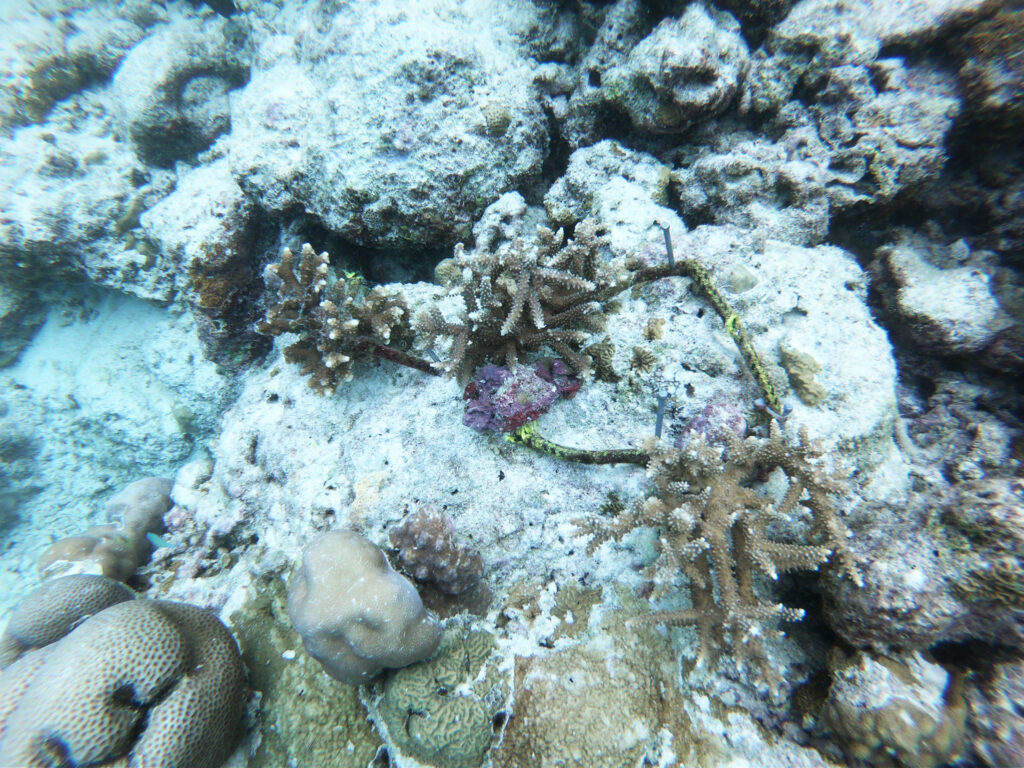
The corals on my adopted rope are continuing to thrive and are reaching a really impressive size! The majority of the colonies are still healthy and should be ready to transplant onto the reef in a few months’ time!
“We know that when we protect our oceans we’re protecting our future.”
Bill Clinton
10th April 2022
Coral restoration with marine
biologist - M. Aleksic in Dhaalu Atoll, Maldives
in Dhaalu Atoll, Maldives
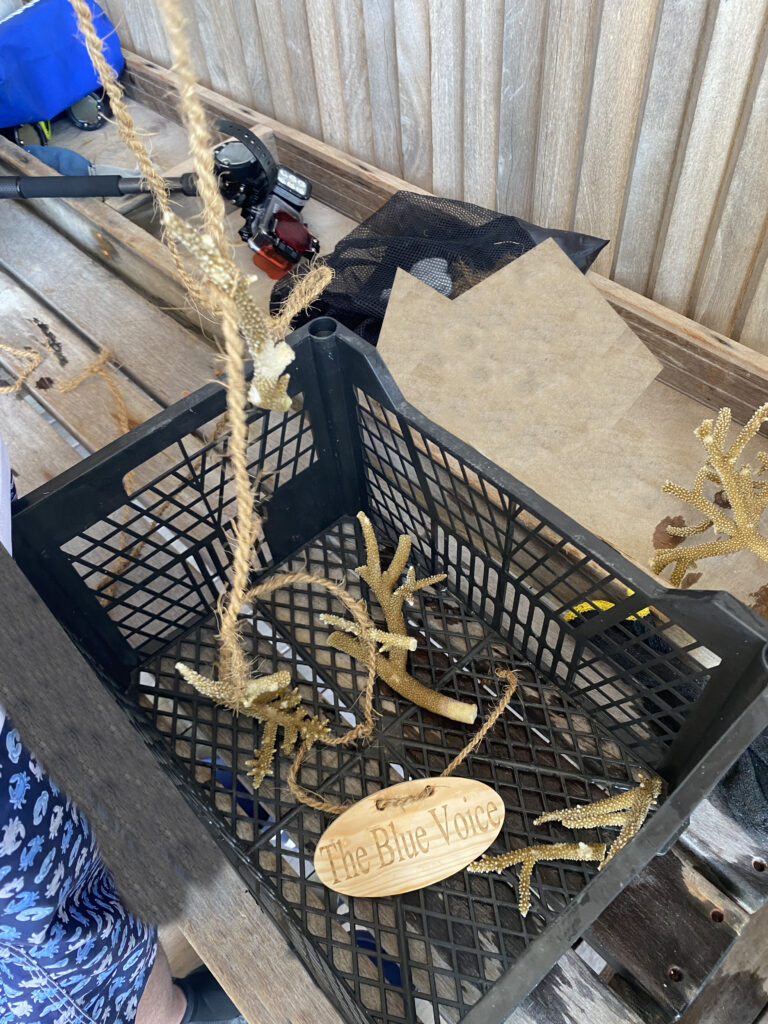

“The rope we used was purchased from local women, who make and sell the rope to supplement their household incomes.”
The night before our excursion, a storm had resulted in a lot of broken coral fragments washing ashore. Rather than being disheartened by this, we gathered the fresh fragments of Acropora Corals and used them to replant. This time, we also used a rope made entirely of natural fibers, which will one day decompose away while the coral lives on. The rope we used was purchased from local women, who make and sell the rope to supplement their household incomes. While this natural rope does attract more algae than synthetic rope does, we hope that this helps recreate the natural ecology of the ocean, allowing the coral to thrive.
When coral reefs are healthy, they emit sounds that attract fish, and the fish that make their homes within them emit sounds that attract other fish. As yet another coral restoration excursion came to a close, I noticed how many more fish I saw in our project area this time, and smiled.
7 Month Update
10th April 2022
25th May 2022
17th July 2022
20th August 2022
26th September 2022
04th November 2022
